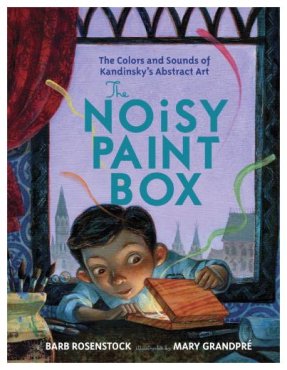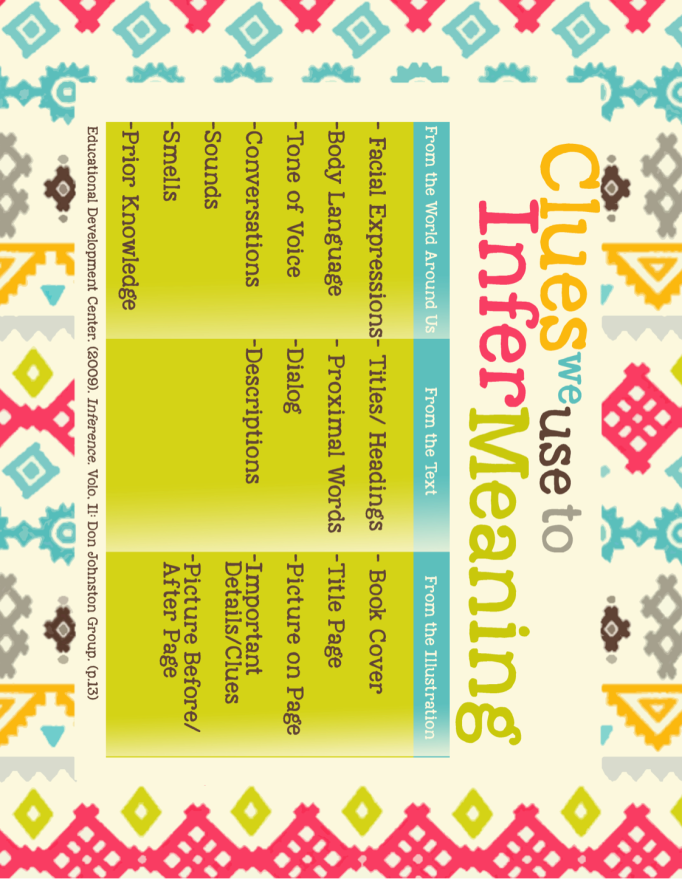READ-ALOUD:
The Noisy Paint Box
By, Barb Rosenstock
OVERVIEW:
Students will engage in a read-aloud exercise that will connect literature to arts objectives. The read-aloud methods will allow students to explore this topic in a structured setting, while practicing comprehension, fluency, inference and vocabulary. This read-aloud will be conducted as a inference exercise modified from lessons created by the Educational Development Center. The EDC (2015) states, “hen learners read inferentially, they are involved with the text at a higher level — reflecting on information, making judgments, and drawing conclusions in response to what they are reading. When readers infer meaning they become more personally engaged with and connected to the deeper meaning of the text, resulting in enhanced understanding and increased learning and retention” (p. 3). This read-aloud will engage students by using context clues to guess secret words and understand meaning.
OBJECTIVE:
Students will practice inference skills by
-listening and participating in class read-aloud methods.
-looking for evidence within the text to build conclusions.
-examining context clues from text, illustrations and self.
MATERIALS:
-The Noisy Paint Box by Barb Rosenstock
-Kandinsky (Basic Art Series 2.0) by Hajo Duchting
-Clues We Use to Infer Meaning Chart (included below)
-Kandinsky Timeline (included below)
-Watercolor Paper
– Permanent Markers
-Crayons
-Watercolor paint
-Classical Music
INTRODUCTION:
Before students enter the room, use small paper tabs to cover important words throughout the book. Students will be using the infer meaning chart to discover contexts clues that will help them guess the word that is covered.
As students walk into the room, softly play classical music. If possible, play selections from composer Arnold Schonberg, who Kandinsky was primarily influenced by. At the students’ tables, will be a list of facts about Kandinsky from the book, Kandinsky, by Hajo Duchting. Students will take turns reading facts about Kandinsky and adding them to the timeline. Throughout this exercise, show students images from the book Kandinsky as well.
Once students have obtained a basic knowledge of Kandinsky and his work, introduce the book, “The Noisy Paint Box,” by showing the students the front and back cover, as well as illustrations throughout the book.
INFERENCE EXERCISE
Students will be guessing the following words, based on text clues, clues in the illustrations, and clues from previous experiences. As the teacher approaches each covered word, allow students to make inferences about the covered words, using the visual and linguistic clues around it. The following words need to be covered:
Appreciate (p. 5), orchestra (p. 8), noisy (p. 9), sound (p. 11), music (p. 12), singing (p. 14), colors (p. 16), heard (p.17) saw (p. 17), paintings (p. 21), music (p. 25), and feel (p. 26).
ACTIVITY:
- Inform the students that they are all now Kandinskys, and while they may not have synesthesia, they can think about the feelings in the music and portray those feelings in their art.
- Play classical music aloud, or if possible, have students work in small groups with headphones. If your class has an iPad cart, allow students to choose a song from an album or list (by providing variety, the class should be able to guess the different feelings based on the “mood” created in the artwork.
- First, in pencil invite the students to draw what they hear, using geometric shapes and a variety of lines, just like Kandinsky. Ask the students to consider how different kinds of lines can effect the emotion they are trying to share. Having his work around the room will provide ideas for their own work.
- Students may then trace the work with permanent markers. If you have thick and thin permanent markers, this is best, as students can use a variety of line weights in their work.
- Then students may use crayons to color some of the shapes in. Ask the students to consider how color can effect the emotions they are trying to share. The students enjoy using metallic crayons for this step!
- To finish the work, students must fill the rest of the page with watercolor paints.
- When the work is dry, invite the students to chose a color of construction paper to mount their work onto, and display around the room!
FOLLOW UP:
Students can post their work on kidsblog, and journal about their experiences as Kandinsky.
“It’s my art,” Vasya answered. “How does it make you feel?” (Rosenstock, 2014, p. 26).
REFERENCES:
Duchting, H. (2015). Kandinksky (basic art series 2.0). Cologne, Germany: Taschen.
Educational Development Center (2015). Inference. Volo, Il: Don Johnston Incorporated. Retrieved from: http://www.wccsonline.com/technology/knowledgebase/Software%20Hardware%20Manuals/R eadOutLoud%20SOLO/Inference%20Lesson%20Instructions.pdf
Rosenstock, B. (2014). The Noisy Paint Box. New York, NY: Random House Books


